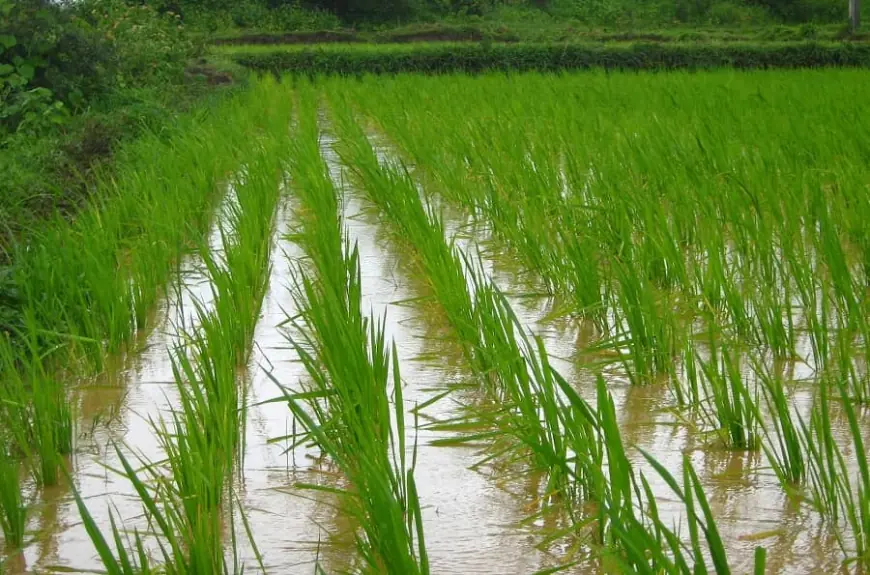Understanding the Vital Importance of Agriculture in India
Among the top economies in the world, the Indian economy is ranked sixth. The vast majority of people in the nation make their living from agriculture.

Among the top economies in the world, the Indian economy is ranked sixth. The vast majority of people in the nation make their living from agriculture. Roughly 14% of the nation's GDP comes from the agriculture industry. Even though the Indian economy depends heavily on the agriculture sector, this sector is constantly declining while the service sector is relatively growing.
India's agricultural heritage extends back to the Neolithic era. India is the world's second-largest agricultural producer. According to the Indian Economic Survey 2020–21, 20.2% of India's GDP came from the agricultural sector, which employed more than 50% of the labour force.
Agriculture's Place in the Indian Economy
Approximately 40% of India's GDP comes from agriculture, which provides the majority of the country's food and livelihood. Despite being one of the most significant industries, agriculture is now trailing behind the service sector in terms of importance. You also consider Swaraj 855 FE Tractor, for more profit in agriculture.
The Economic Sector of Agriculture in India
India's economy is primarily focused on agriculture and is heavily reliant on it for distribution, consumption, and production. India produces far less per farmer than is actually required. The agricultural sector is one of the most important ones in the Indian economy, notwithstanding all of its drawbacks.
Agriculture's Place in the Indian Economy
Agriculture in India has a livelihood to roughly two-thirds of the nation's total population, both directly and indirectly. Contribution to National Income: Even in this day and age, India's agricultural sector is vital to the nation's economic growth. Agriculture continues to account for a large portion of the nation's Gross Domestic Productivity (GDP) even though its contribution to national income has decreased. The country's agricultural GDP share dropped from a peak of 55.4% in 1950–51 to 18.2% in 2014–15.At the current rate, the country's Gross Value Added (GVA) for the year 2019–20 was 16.5% percent contributed by agriculture and related activities.
Contribution to the Revenue of the Government
The primary source of revenue for both the federal and state governments is agriculture. Growing land revenue provides a significant source of income for the national government. Additionally, the transportation of agricultural products helps the Indian railways make money, which benefits the government's ability to raise money.
Agriculture and the industrial sectors' relationship
Raw materials are always needed for the ongoing production of goods, and the majority of the nation's industries obtain these materials straight from the agricultural fields.
Almost half of India's industrial sector's revenue is derived from industries with an agricultural focus. As a result, the agricultural sector in India greatly influences the industrial sector.
Contribution to Global Trade:
A significant part of international trade is agriculture. The nation's well-known traditional exports include jute, tea, coffee, and spices. Notable and significant goods intended only for the agricultural sector of the economy are fertilisers, harvesters, and thrashers.
India needs foreign exchange from exports to pay for the import of crude oil, defence supplies, and other items.
No matter how advanced an economy is, agriculture remains essential. By providing for both food and non-food needs, it partially satisfies fundamental human needs. It provides;
-
Foods such as wheat, rice, pulses, and coarse grains
-
Commercial crops such as sugarcane, cotton, and oilseeds
-
Planting crops such as organic goods, vegetables, flowers, flavours, cashews, and coconuts; and establishing crops such as tea and coffee. Additionally, certain associated activities such as fisheries, poultry, and milk and dairy products are associated with the agricultural sector. Farming provided the fundamental driving force behind industrial advancement for a large number of the developed and industrialised world.
Agriculture in India following Independence
The independent Republic of India was able to create a comprehensive agricultural programme in spite of some stagnation in the later modern era. Harvesting blueberry flowers in India. In India's Central Gujarat, this is a cash crop. Since gaining its independence, India has come a long way in achieving food security. The production of food grains has more than quadrupled while the population of India has tripled. The amount of food grains available per person has significantly increased.
Why is agriculture that is sustainable so important?
Sustainable farming saves the environment and increases the earth's natural resources, which contributes to both humans and animals having high standards of living. This is the reason it is important. It is imperative to acknowledge the significance of sustainable agriculture, as its primary objective is to conserve natural resources, which are rapidly running out. By preserving the quality of the soil, lowering erosion, and saving water for future generations, it also helps the environment.
In summary, agriculture is vital to society and cannot be disregarded since it not only gives people access to food and employment but also upholds social order. Furthermore, agriculture creates a healthy environment for us and benefits the surrounding areas.
These are all about Understanding the Vital Importance of Agriculture in India. For more information about Mahindra 265 DI, stay connected with us.
What's Your Reaction?
 Like
0
Like
0
 Dislike
0
Dislike
0
 Love
0
Love
0
 Funny
0
Funny
0
 Angry
0
Angry
0
 Sad
0
Sad
0
 Wow
0
Wow
0



















































